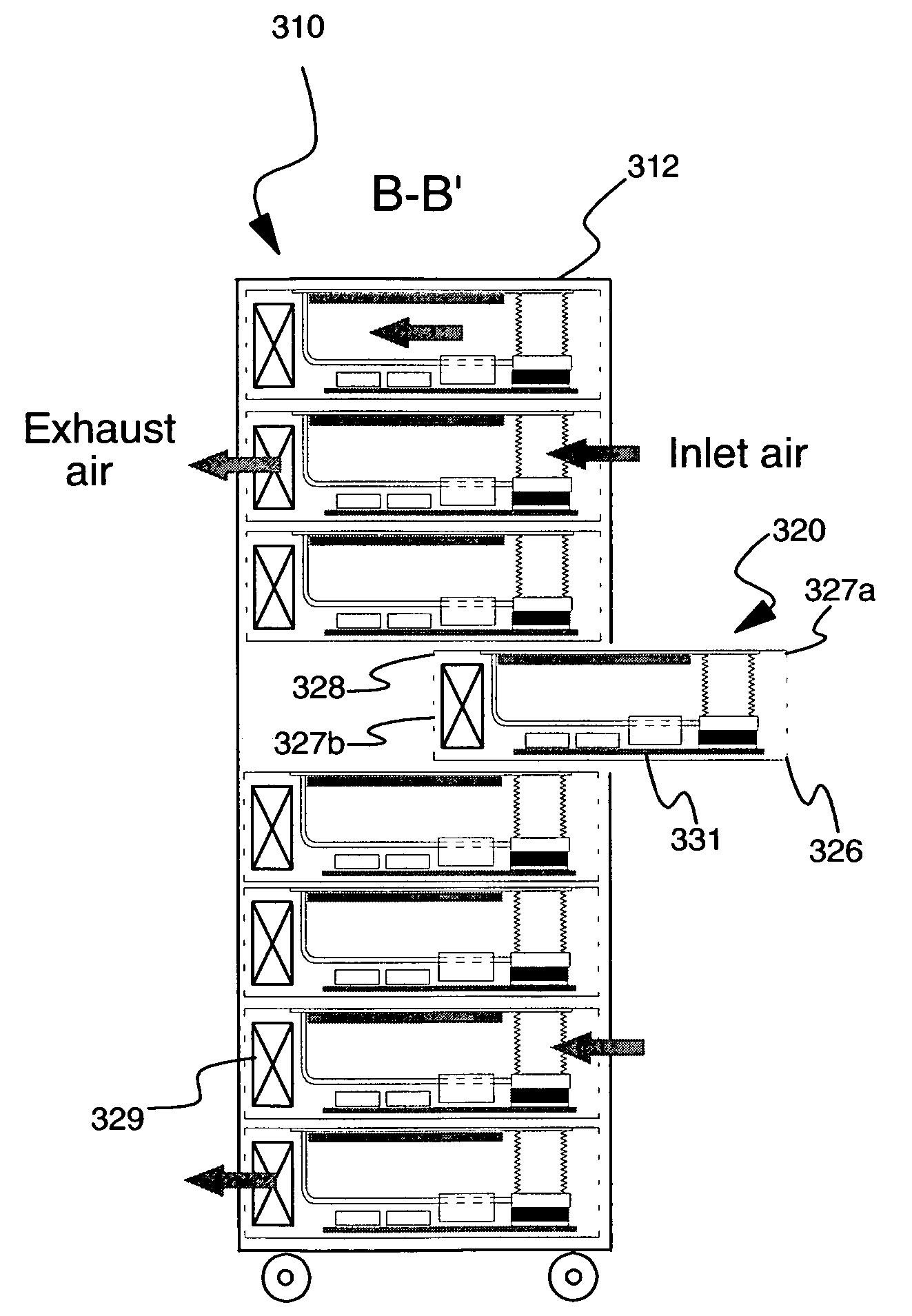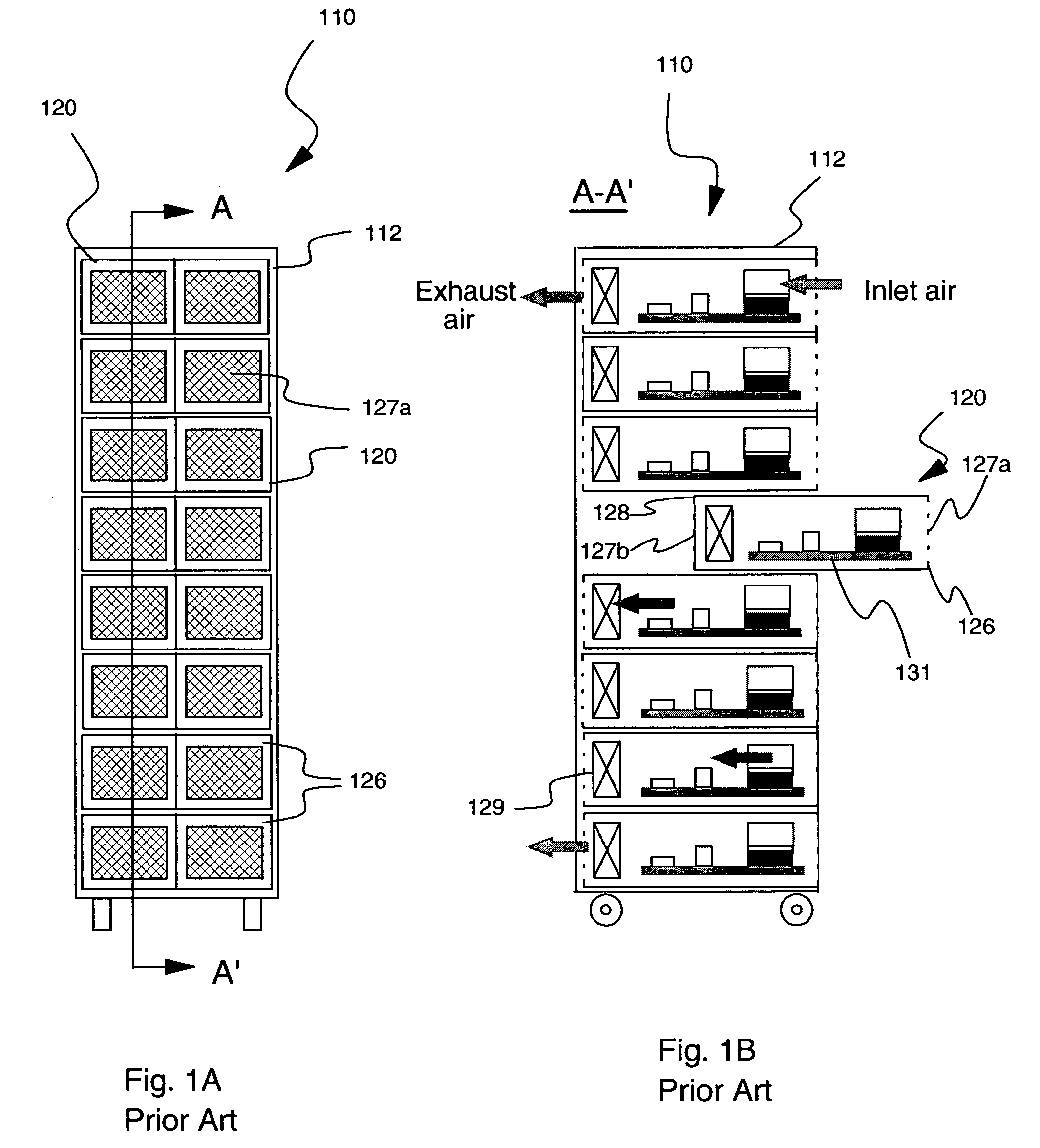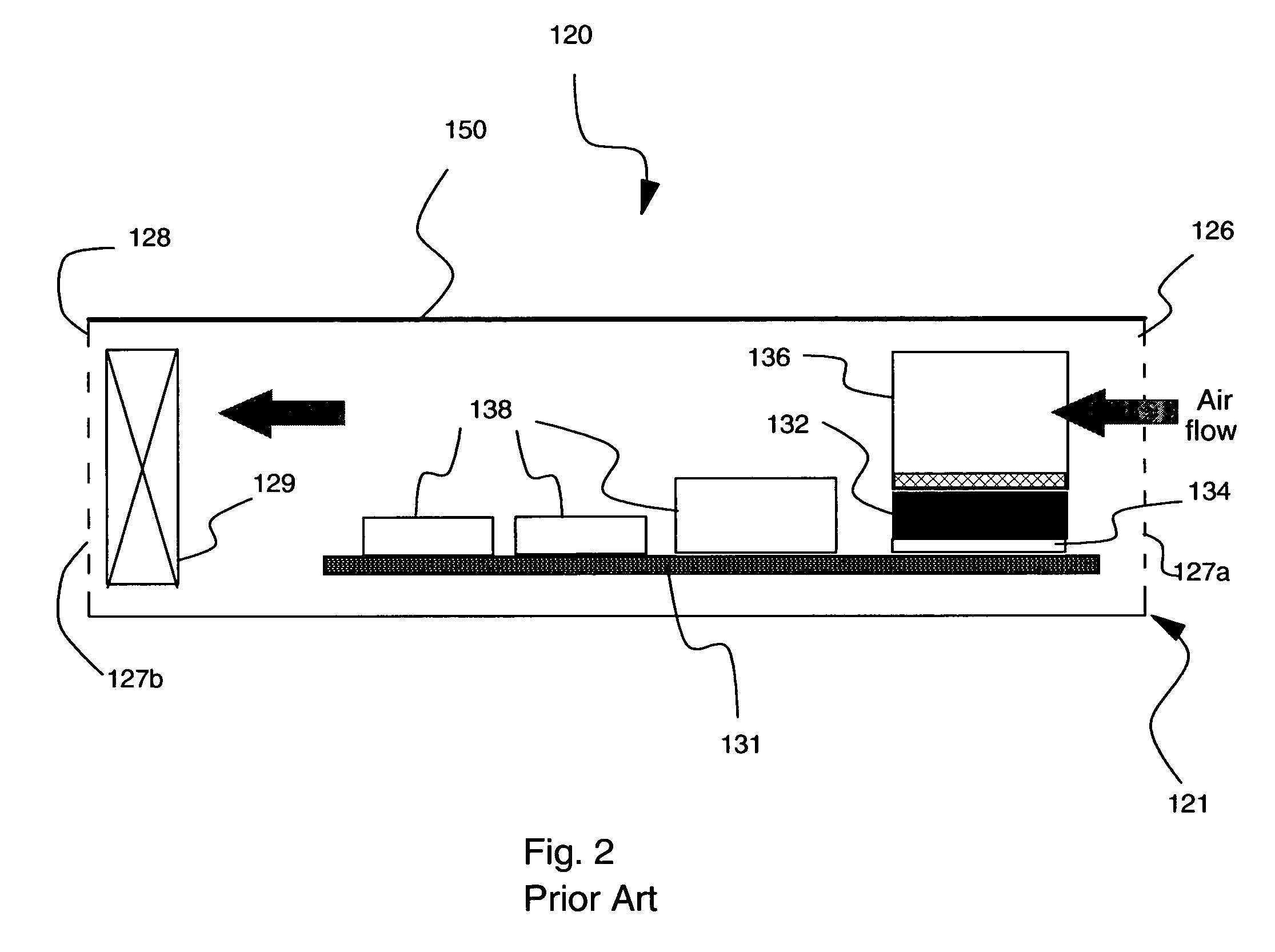Cooling assembly for electronics drawer using passive fluid loop and air-cooled cover
a technology of electronics drawer and cooling assembly, which is applied in the direction of insulated conductors, power cables, cables, etc., can solve the problems of increasing device temperature, increasing power dissipation, and therefore heat production, and achieve the effect of increasing the surface area
- Summary
- Abstract
- Description
- Claims
- Application Information
AI Technical Summary
Benefits of technology
Problems solved by technology
Method used
Image
Examples
Embodiment Construction
[0038] In accordance with preferred embodiments of the present invention, a passive liquid cooling loop and air cooled cover assembly for an electronics drawer is disclosed herein.
[0039]FIGS. 1A and 1B illustrate prior art electronics rack assembly 110. FIG. 1A depicts a front view, showing a two-column array of electronics drawers 120 arranged within rack frame 112. Rack frame 112 provides mechanical support for the array of drawers 120: drawers 120 are preferably mounted within rack frame 112 such that each drawer is capable of being slid forward without disturbing other drawers 120, as illustrated in FIG. 1B. Each drawer includes a front panel 126 having air inlet 127a, through which ambient air enters each drawer 120. FIG. 1B depicts a cross section of rack 110, taken along line A-A′ of FIG. 1A. As illustrated in FIG. 1B, each drawer 120 includes an air moving device, such as fan 129, mounted within drawer 120. Fan 129 causes air to flow from air inlet 127a within drawer front ...
PUM
 Login to View More
Login to View More Abstract
Description
Claims
Application Information
 Login to View More
Login to View More - R&D
- Intellectual Property
- Life Sciences
- Materials
- Tech Scout
- Unparalleled Data Quality
- Higher Quality Content
- 60% Fewer Hallucinations
Browse by: Latest US Patents, China's latest patents, Technical Efficacy Thesaurus, Application Domain, Technology Topic, Popular Technical Reports.
© 2025 PatSnap. All rights reserved.Legal|Privacy policy|Modern Slavery Act Transparency Statement|Sitemap|About US| Contact US: help@patsnap.com



